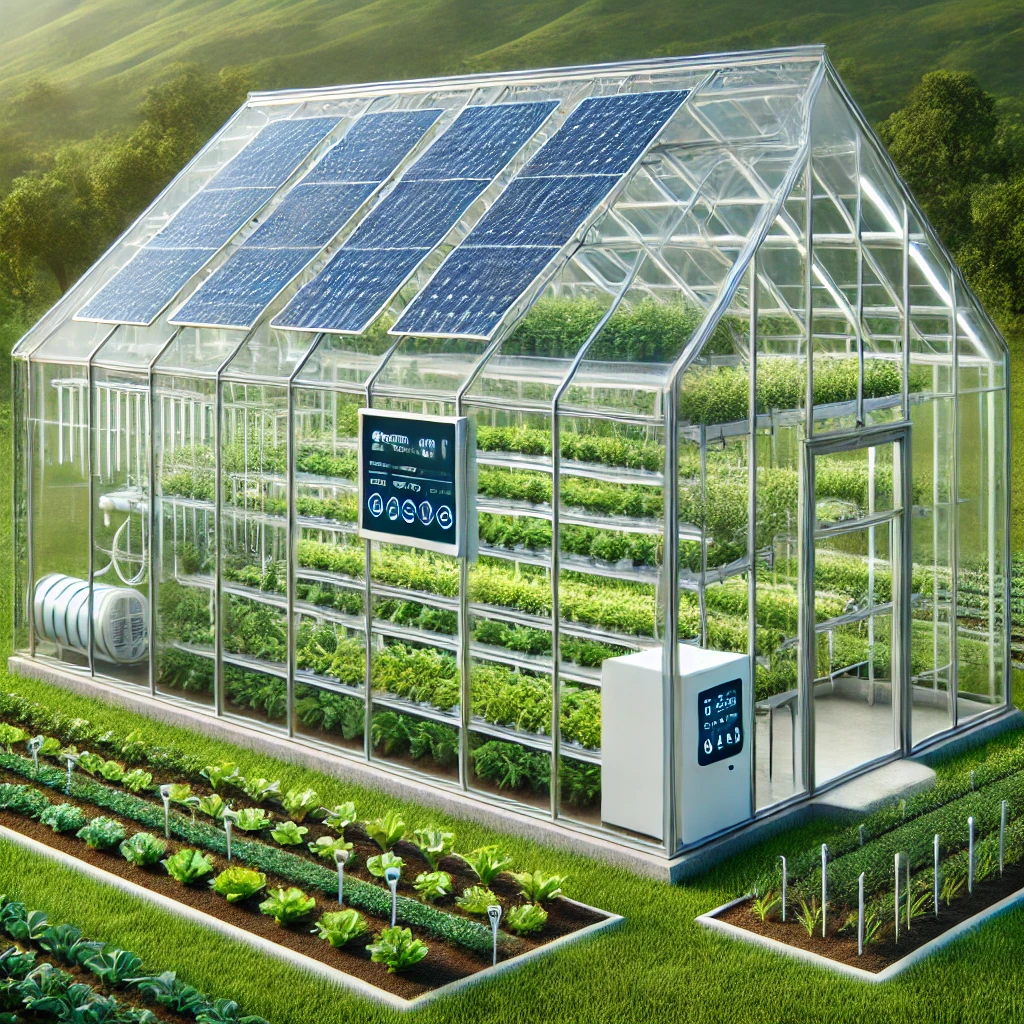As technology advances, solar-powered smart greenhouses are transforming gardening by combining renewable energy with automation. These innovative systems use solar panels to power irrigation, temperature control, and nutrient distribution—creating the perfect growing environment while reducing manual effort. With sustainability and efficiency at the forefront, smart greenhouses are revolutionizing both home gardening and commercial farming.
1. What Are Solar-Powered Smart Greenhouses?
A solar-powered smart greenhouse is an advanced growing system that uses solar energy to automate essential plant care processes. Unlike traditional greenhouses, which require manual adjustments for watering, ventilation, and temperature control, smart greenhouses use sensors and automation to maintain optimal conditions with minimal human intervention.
By integrating solar panels, these greenhouses generate renewable energy to run various systems, making them both eco-friendly and cost-effective.
2. How Do Smart Greenhouses Work?
Solar-powered smart greenhouses rely on several interconnected components to function efficiently:
- Solar Panels – Capture sunlight and convert it into electricity to power automation systems.
- Smart Irrigation – Automated drip or mist irrigation systems ensure plants receive the right amount of water at the right time.
- Climate Control Sensors – Monitor temperature, humidity, and CO₂ levels, adjusting ventilation and shading automatically.
- Automated Nutrient Delivery – Sensors detect soil or hydroponic solution conditions and distribute nutrients accordingly.
- Mobile & AI Integration – Many systems connect to mobile apps, allowing gardeners to monitor and adjust conditions remotely.
3. Advantages of Solar-Powered Smart Greenhouses
These advanced systems provide numerous benefits for both small-scale gardeners and large-scale agricultural operations:
- Energy Efficiency – Solar panels reduce reliance on fossil fuels and lower electricity costs.
- Water Conservation – Smart irrigation prevents overwatering, reducing waste.
- Consistent Growth Conditions – Automated climate control maintains stable temperatures, reducing stress on plants.
- Reduced Labor – Less manual intervention is needed, making gardening more accessible for all skill levels.
- Year-Round Growing – Advanced heating and cooling systems allow for plant cultivation in all seasons.
4. Best Crops for Smart Greenhouses
Solar-powered smart greenhouses support a wide variety of plants, including:
- Vegetables: Tomatoes, cucumbers, peppers, and lettuce.
- Herbs: Basil, mint, cilantro, and rosemary.
- Fruits: Strawberries, blueberries, and small citrus trees.
- Flowers: Orchids, roses, and other ornamental plants.
5. The Future of Solar-Powered Greenhouses
As sustainable farming gains momentum, solar-powered smart greenhouses will continue to evolve. Innovations on the horizon include:
- AI-Driven Automation – Machine learning will optimize growing conditions based on real-time data.
- Water Recycling Systems – Improved filtration and recirculation methods will reduce water waste even further.
- Vertical Smart Greenhouses – Multi-layered structures will maximize space efficiency, especially in urban areas.
Conclusion
Solar-powered smart greenhouses represent the future of effortless gardening. By harnessing renewable energy and automation, they create an efficient, self-sustaining system that promotes plant health while reducing environmental impact. Whether for home gardeners or commercial farmers, these advanced greenhouses make growing easier, smarter, and more sustainable than ever before.

Leave a Reply